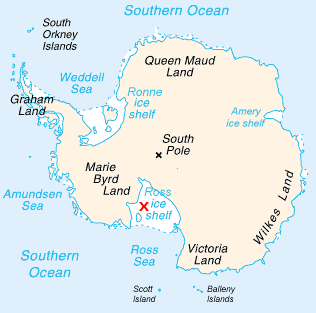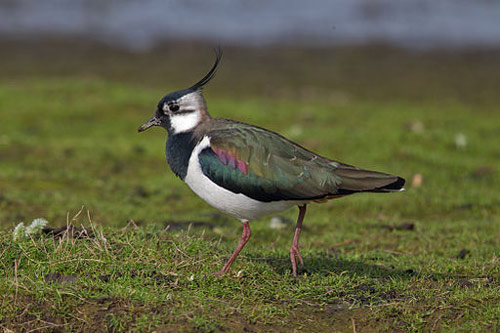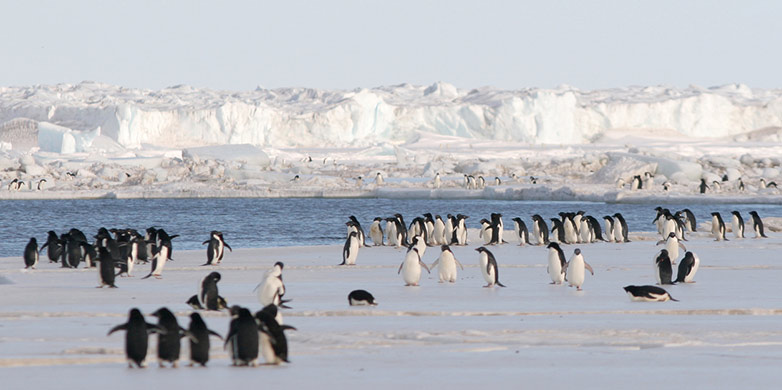Finding Antarctica in our backyard
Antarctica has a new marine reserve, while here in Switzerland voters recently missed the chance to create Parc Adula. While we protect whales we’ll never see, let us not forget the animals and plants in our own unnaturally still woods and fields.
Policy makers and scientists recently celebrated the creation of the world’s largest marine reserve just off the Ross Ice Shelf in Antarctica [1]. Weddell seals, killer whales and emperor penguins will now be protected, and great populations of fish, including the Antarctic toothfish, will have some measure of refuge from fishing fleets, which will be barred from the reserve. At 1.55 million square kilometres of ocean – an area equivalent to 37 Switzerlands – the marine reserve established by this important agreement between 24 countries and the European Union is undoubtedly a good thing for those of us who value nature in a world that seemingly values nature somewhat less.
A local conservation ethic

Even while we rightly celebrate the protection of a remote and pristine environment, we nonetheless have scant regard for the environment and its biodiversity in our immediate neighbourhood. WWF’s Living Planet Report [2] concluded recently that across the globe we have lost almost 58% of all terrestrial and marine wildlife populations in only the past 40 years (1970-2012) – and this figure is likely to rise to 67% by 2020. Some of this is happening in remote environments, including Antarctic oceans and Bornean rainforests, but make no mistake: much of this decline is in our own immediate neighbourhood.
Although we campaign to protect tigers and whales in far-off lands, we are very good at ignoring the decline of our local garden birds, woodland insects, alpine flowers, and veteran trees. In Europe, our hedgerows and field boundaries, once havens of insect and arachnid diversity, have been stripped of their natural identity, or removed entirely, by decades of intensive farming. Our woodlands are unnaturally still. We hardly seem to notice, still less to care. Here in Switzerland, for example, voters have just rejected the chance of creating Parc Adula [3], which would have been only our second national park. Tropical rainforests and Antarctic seas seem to have more pull on our conscience than does our own backyard. Why is that?
A sense of place
I put this down to the loss of a “sense of place” in our modern and largely urbanised lives. Amos Rapoport, an Australian architect of some renown [4], is fascinated by the relationship that Aboriginal Australians have with their land. Every feature of the landscape is imbued with meaning and myth. Myths and rituals, geographically bound to the land itself, demarcate a sense of belonging and understanding. Stones and streams tell stories that describe a mythological landscape which gives meaning and purpose to life. The natural and mythical landscapes are not the same, Rapoport tells us, but the two intertwine and intersect at visible physical locations, and in natural phenomena. Aborigines do not just move in a physical landscape, but in a “humanised realm saturated with significations”. What to our eyes is a vast and empty landscape is, to an Aborigine belonging to that land, filled with details and meanings that bridge physical and spiritual realms.
We in the West completely misunderstand the nature and meaning of Aboriginal landscapes, but we also risk completely misunderstanding the meaning and nature of our own landscapes. Rapoport the architect tells us that Aborigines are unimpressed by photos of buildings, or, for that matter, airplanes and cars, but they do have great regard for and interest in scenery, landscapes, people and animals. Our values, by contrast, have become tied to our constructed landscape, our buildings and towns – or even more prosaically, our material goods, symbolising our wealth and prestige, and our desire for recognition. We have lost touch with the natural landscape around us, and consequently we fail to understand its value. We no longer have a sense of place. This, I believe, is the underlying reason for why we have failed to prevent the decline of our own native European species, even though this tragedy is unfolding before our very eyes.
In congruence with the land

As an undergraduate at the University of St Andrews (Scotland) I remember cycling along the country roads of the East Neuk of Fife, marvelling at clouds of peewits wheeling over recently ploughed fields. I recall gossamer threads of floating spiders that clogged my windblown hair. Peewit numbers have dropped by around 60% since that time, and the irritation of gossamer threads would not be recognised by cyclists today. These particular constellations of land, wildlife, and experience are now lost, though they are safe in my memories.
Conservation is not only about protecting remote places of outstanding beauty and exotic species – which we will likely never see. It is also about the conservation of our everyday experiences with nature: not as memories, but as real experiences to be encountered again with our children and by our grandchildren.
To realise such a vision, we need to take a closer look at our immediate landscape, to recognise its natural beauty, and immerse ourselves in it. We need to rediscover our own sense of place, imbued with the non-tangible values that deepen our connection to land and nature. Only then can we, like Aboriginal Australians, build a more congruent relationship with the land – a relationship in which we align ourselves with the land, rather than jar against it.
Further information
[1] Commission for the Conservation of Antarctic Marine Living Resources (external pageCCAMLRcall_made) (2016)
[2] WWF external pageLiving Planet Reportcall_made (2016)
[3] external pageParc Adulacall_made
[4] Amos Rapoport (1972) external pageAustralian Aborigines and Definition of Placecall_made

